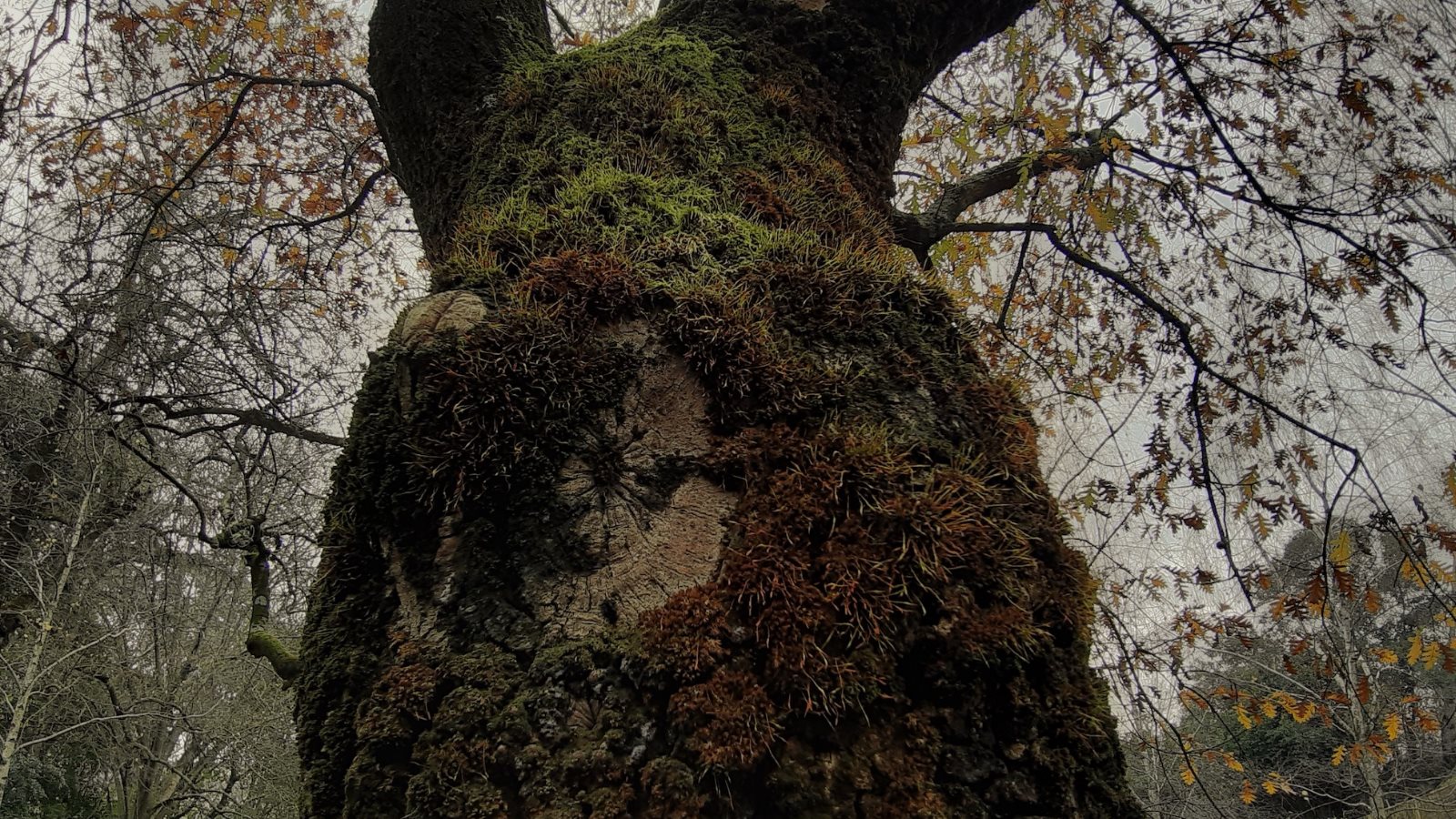Five species of mosses and lichens to look for in January and February
A naturalist in the Gulbenkian Garden
Mosses and lichens are known as good biomonitors: based on the species found in a particular place and how tolerant they are to pollutants in the atmosphere, researchers can estimate the quality of the air.
Mosses belong to the bryophytes group, plants that do not have a vascular system to carry water and other products, which therefore spread slowly cell to cell. Lichens are symbiotic associations between fungi and algae, in which the fungi obtain the sugar produced by algae during the process of photosynthesis, becoming protected throughout the year.
Although they are very different life forms, both are microscopic beings and to identify them you better use a magnifying glass with a magnification power of 10 times. However, even with the naked eye, you can observe them carefully and appreciate the complexity of this world on a small scale.
Take the challenge and look out for these five species of lichens and mosses, identified with the help of Paula Matos, a researcher at the Faculty of Sciences of the University of Lisbon, and Cristiana Costa Vieira, curator of the herbarium at the Natural History and Science Museum at the University of Porto.
Common Greenshield Lichen
Flavoparmelia caperata
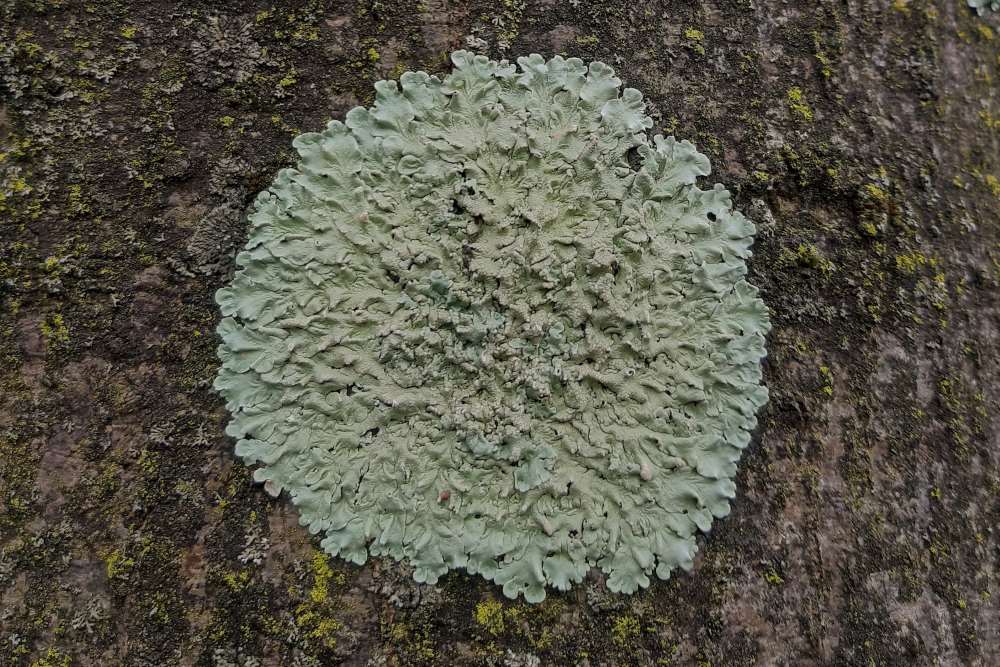

This lichen belongs to the foliaceae group that, as the name implies, resemble leaves. Look out for it on tree trunks, its colour is usually tones between yellow and pale green, resembling a lettuce leaf. It is very common in Portugal.
Candleflame Lichen
Candelaria concolor

A folioceous lichen, this species’ stem is either orange or yellow in colour. It is easier to find on the trunks of deciduous trees, in open areas.
Common Sunburst Lichen
Xanthoria parietina

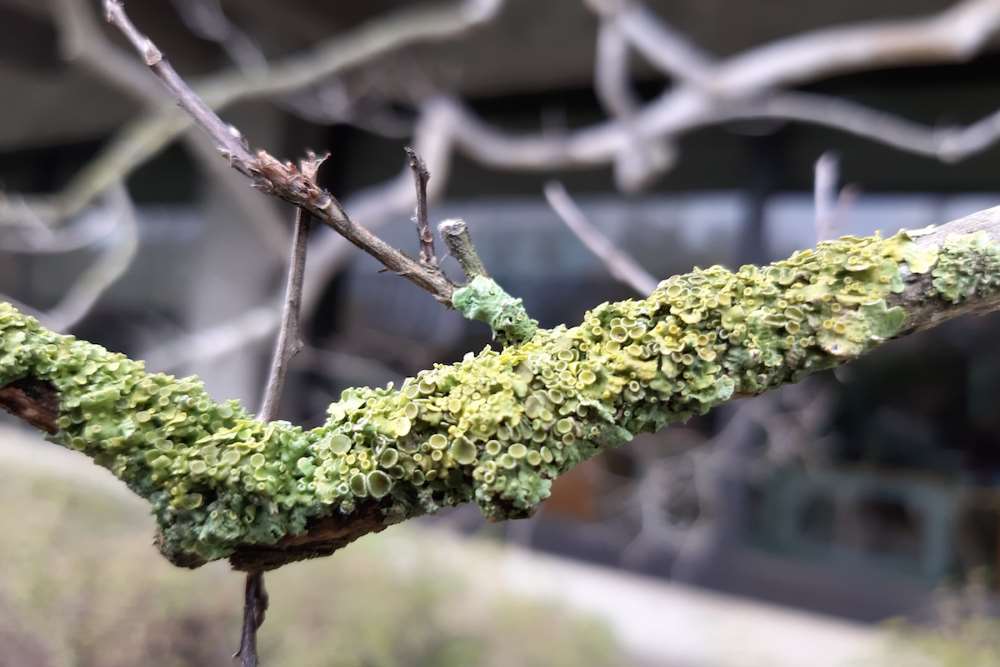
It is usually found on tree trunks but can also be spotted on rocks. Colours usually range from dark yellow to reddish orange but when it is in the shade, it takes on greener shades than usual (see photo). It is known to be very tolerant to pollution.
Capillary Thread-moss
Bryum capillare
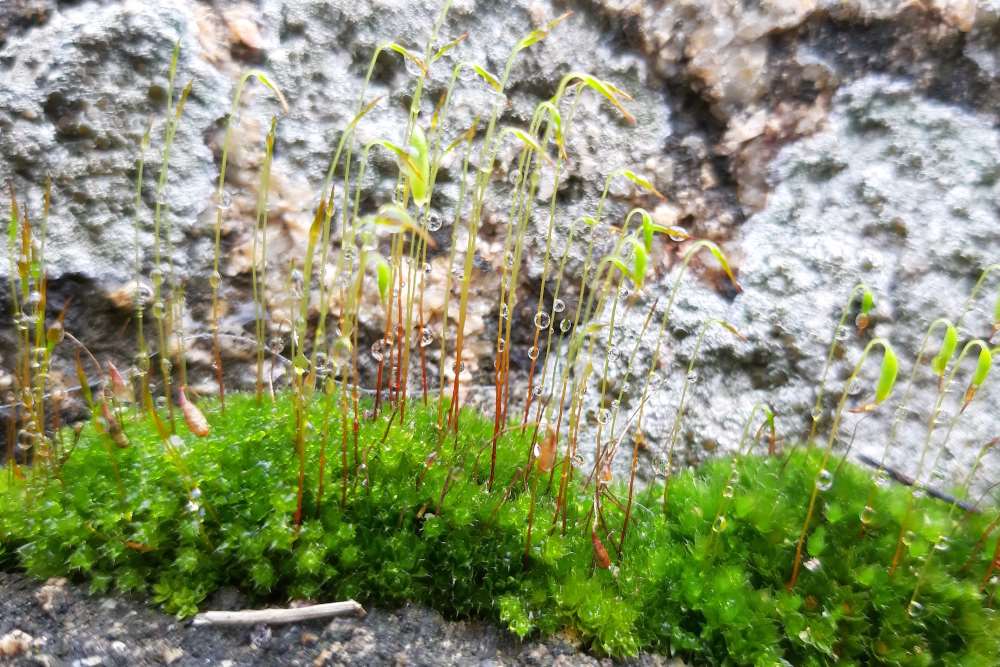
This species belongs to the Bryaceae family, the largest family in the bryophytes group. It is a very common species of moss which grows in tufts and is one of the easiest to find in gardens. It is found on a wide variety of soils as well as on trees, fences, walls, roofs and rocks.
Small Hairy Screw-moss
Syntrichia laevipila
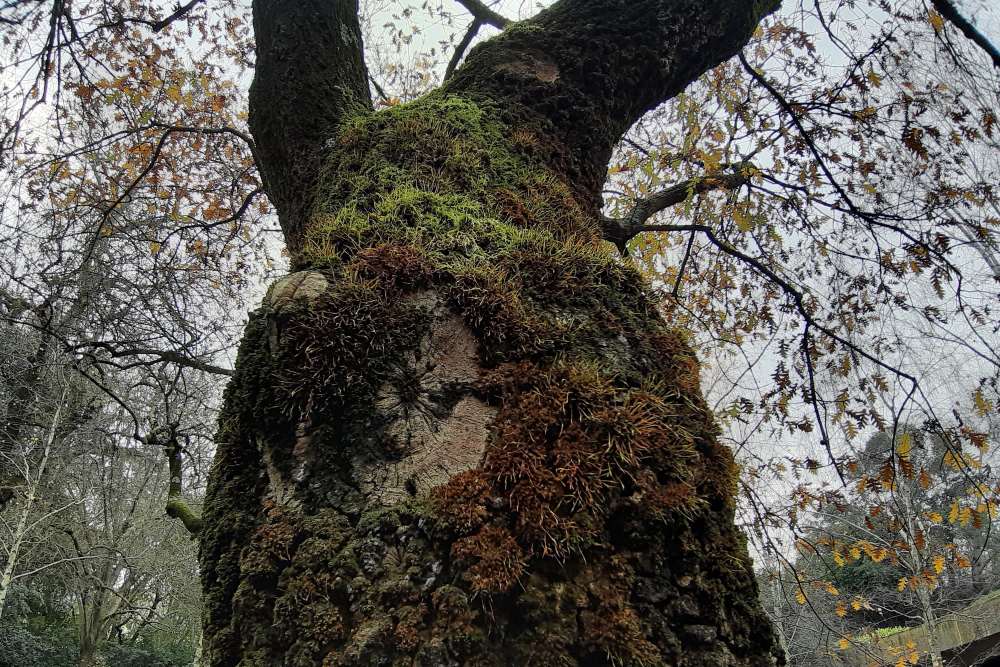
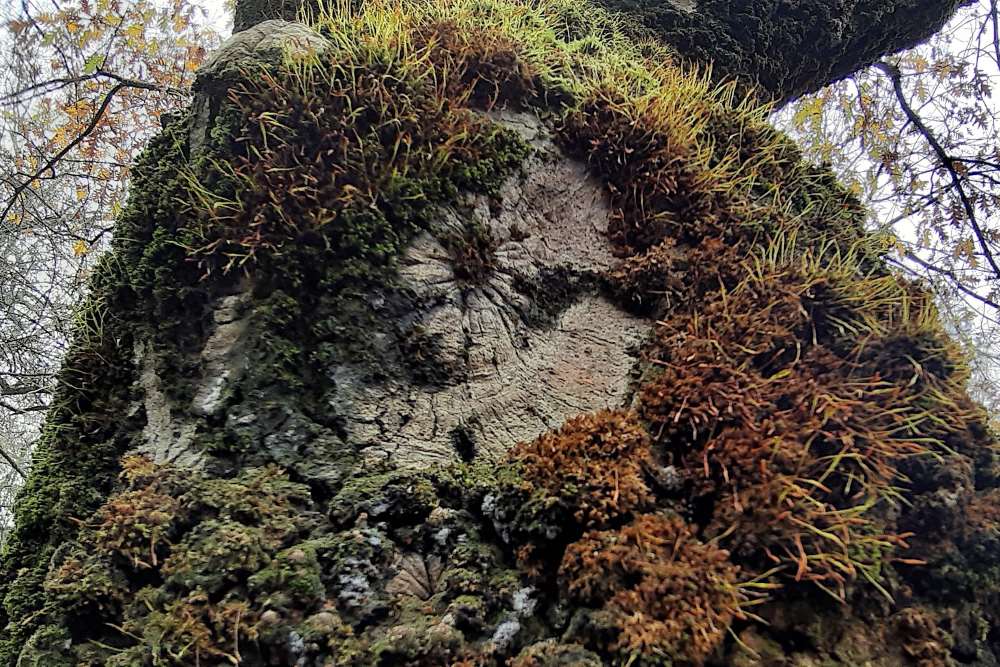
Here is another bryophyte plant that you can look out for in this and other urban gardens. It grows on a wide variety of trees, usually in bright, tones of green and yellow, taking on greyer shades as the plants dry out.
